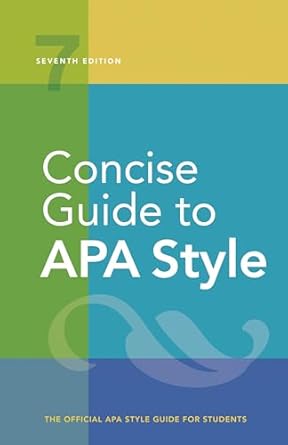[toc]
biasfree language a guide to inclusive writing
Concise Guide to APA Style: 7th Edition (OFFICIAL)
Page 102 Review
The Importance of Bias-Free Language: A Critical Analysis
In today’s diverse and interconnected world, the language we use plays a pivotal role in shaping perceptions and fostering inclusivity.
The excerpt from the book emphasizes the critical need for bias-free language, particularly when discussing sensitive topics related to socioeconomic status (SES), race, and ethnicity.
This commentary delves into the key concepts presented in the excerpt, highlighting the importance of adopting person-first language, recognizing intersectionality, and avoiding deficit-based language.
Adopting Person-First Language
The excerpt strongly advocates for the use of person-first language, emphasizing the need to focus on individuals rather than labels.
Instead of using terms like “the homeless,” “inner-city,” “ghetto,” “the projects,” or “poverty-stricken,” the excerpt suggests using specific and respectful language that acknowledges the person’s humanity.
For example, instead of “welfare mothers,” it recommends using “mothers who receive TANF benefits.” This shift in language reflects a deeper understanding of the individual’s circumstances and avoids perpetuating harmful stereotypes.
As the excerpt states, “Instead, use specific, person-first language such as ‘mothers who receive TANF benefits’ rather than ‘welfare mothers’ (‘TANF’ stands for ‘Temporary Assistance for Needy Families’ and is the proper term for the current welfare program in the United States).” This quote encapsulates the core principle of person-first language: prioritizing the individual’s identity over their situation.
Similarly, when discussing individuals without a fixed residence, the excerpt advises against using the term “the homeless.” Instead, it suggests using phrases like “people experiencing homelessness,” “people who are homeless,” “people in emergency shelter,” or “people in transitional housing.” This nuanced language avoids reducing individuals to their housing status and acknowledges the temporary nature of their situation.
Recognizing Intersectionality
The concept of intersectionality, as highlighted in the excerpt, is crucial for understanding the complexities of individual identities.
Intersectionality recognizes that individuals are shaped by a multitude of factors, including race, ethnicity, gender, socioeconomic status, and more.
These factors intersect and interact with one another, creating unique experiences and challenges for each individual.
The excerpt emphasizes the importance of acknowledging these intersecting identities when writing about personal characteristics.
As the text says: “When authors write about personal characteristics, they should be sensitive to intersectionality—that is, to the way in which individuals are shaped by and identify with a vast array of cultural, structural, sociobiological, economic, and social contexts (Howard & Renfrow, 2014).” By recognizing intersectionality, authors can avoid making generalizations and ensure that their writing is inclusive and respectful of diverse perspectives.
Furthermore, the excerpt highlights the historical association between SES terms and racial/ethnic minority groups.
It cautions that terms like “low income” and “poor” have often served as implicit descriptors for these groups.
Therefore, it is crucial for authors to include racial and ethnic descriptors within SES categories, as in: “This sample includes low-income and middle-income Puerto Rican fathers.” This practice helps to break down stereotypes and promote a more accurate representation of diverse communities.
Avoiding Deficit-Based Language
Deficit-based language focuses on what people lack rather than on what they possess.
This type of language can perpetuate negative stereotypes and blame individuals for their circumstances.
The excerpt argues against using deficit-based language and encourages authors to adopt a strengths-based perspective.
Instead of labeling people as “high school dropouts,” “being poorly educated,” or “having little education,” the excerpt suggests using more sensitive and specific descriptors such as “people who do not have a high school diploma or equivalent.” This language avoids stigmatizing individuals and acknowledges their potential for growth and achievement.
Moreover, the excerpt encourages authors to focus on the systemic factors that contribute to inequality.
Instead of writing about an “achievement gap,” it suggests writing about an “opportunity gap” to emphasize how the context in which people live affects their outcomes or opportunities.
This shift in language highlights the need for systemic change and acknowledges the role of society in creating and perpetuating inequality.
As highlighted in the text: “Implicit biases around economic and occupational status can result in deficit-based language that blames individuals for their occupational, educational, or economic situation (e.g., “attendant economic deficits”) rather than recognizing a broader societal context that influences individual circumstances.” This emphasizes that individual circumstances are often products of larger societal forces, rather than solely personal failings.
Conclusion
The excerpt provides valuable insights into the importance of bias-free language in promoting inclusivity and understanding.
By adopting person-first language, recognizing intersectionality, and avoiding deficit-based language, authors can contribute to a more equitable and respectful society.
The principles outlined in this excerpt are essential for anyone who seeks to communicate effectively and responsibly in a diverse world.
By consciously choosing our words, we can shape perceptions, challenge stereotypes, and create a more inclusive environment for all.
Buy full ebook for only $18: https://www.lulu.com/shop/american-psychological-association/concise-guide-to-apa-style-7th-edition-official/ebook/product-rmzpq54.html?page=1&pageSize=4
Biasfree Language A Guide To Inclusive Writing
Read more: Author Affiliation Guide: Formatting for Academic Papers


Leave a Reply